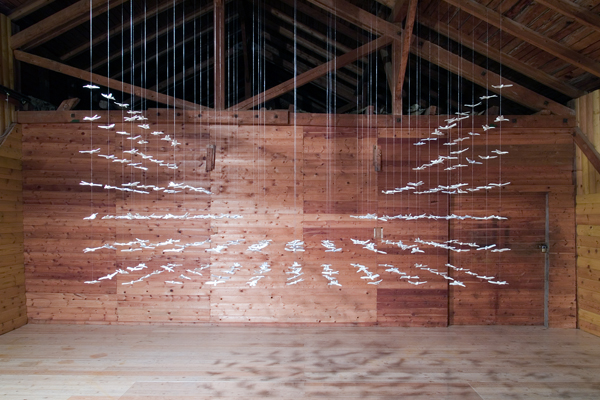selam mekan
Activities
23 January 2014 - 22 February 2014
selam mekan
11:00 AM - 11:00 PM
Katara Cultural Center
This Event Passed

Selâm_MEKÂN Exhibition by Canan Dagdelen Canan Dagdelen is a native of Istanbul, where she was born in 1960. She graduated from the Vienna University of Economics and Business in 1986 and received a master’s degree from the University of Applied Arts Vienna in 1991. She lives in Vienna. The focal point of her work is architecture, although the historical development of writing also forms part of her thought and research. She is also keenly interested in the relationship between time and memory in photographic images. In her installations, Dagdelen explores from a sociological perspective the concepts of settling down, of social affiliation, permanent order, and finding a place for oneself by defining them in architectural terms. Through modular spheres that the artists calls “dots”, she reduces architectural structures to their smallest units and situates them in a given space. The emptiness within these structures, whose shape is created through an arrangement of suspended porcelain and metal spheres, becomes important, especially in terms of the relationship between the part and the whole. Delocalized and decontextualized, these architectural constructions situated in space are works that transcend time and space. Antagonistic relations such as construction and deconstruction, past and present, and virtual and real are perceived simultaneously. Her work creates its own poetic language. The way in which it is situated in space encourages viewers to seek its form and discover its own unique language. She focuses on issues of belonging to a cultural tradition and her own origins in a globalizing world. Exploring possible definitions of settling in current living conditions shaped by constant mobility, her work frequently invokes forms and shapes that connect to the traditional culture of the past. Besides their symbolic power to connect the past and the present, her works are remarkable for their sense of space and infinite ties with time. Continuity of movement, integration of space and time, and efforts to achieve non gravity appear as Dagdelen’s main concerns in her work. Canan Dagdelen has developed her concept for the gallery space in KATARA with comprehensive installations and two smaller wall objects: “ In my work uzam_ zaman, the close relationship of content and words to each other drew my attention; it excited me to discover the Equal section within the Turkish words uzam (space) and zaman (time) that they accommodated the word “zam“. A precise writing written on space in my own handwriting, focusing the viewer on the word “an“(moment) by “zaman”. I specifically chose the color white, in an attitude drawing itself back, integrating with the walls of the gallery. Here, what’s important for me is the shadow, the dynamic position and space in the venue.” C.D. The second largest installation at KATARA exhibition is the form of a bridge Libellulidae II positioned in air comprising a dragonfly flock. As if they will create another form, another architecture, landing someplace else almost the next moment. “I discovered the dragonfly for the first time in ancient Chinese ink drawings. They bore transience, short lifespan in an extremely Aesthetic form. As if a dragonfly flying away from us, which cannot be captured, describes us a world of imagination that we couldn’t Reach. I like the idea of forming a sound architectural bridge form through reproduction of a module with such content because they were in contrast to each other. Building the module by a vulnerable material reinforced its content even more. Later, I was surprised that when they formed a flock, they could somewhat irritate. They could have fixed the bridge in air with their feature of standing in air with four wings; yet they are also ready to create another form flying somewhere else at any moment…” C.D.
Schedule
Thursday, 23 January 2014 Saturday, 22 February 2014
11:00 AM - 11:00 PM
+974 4408 0000
Location
Katara Cultural Center
GALLERY
© Copyright 2020 Katara. All Rights Reserved.